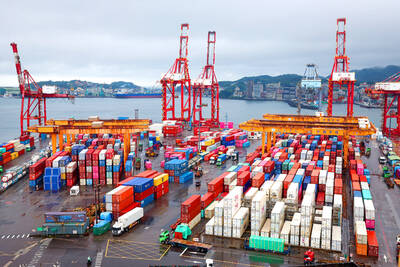First Priority Bank with six branches on Florida’s Gulf Coast was closed by state regulators, becoming the eighth US bank to collapse this year amid failed loans and writedowns linked to a slump in home prices.
First Priority, with US$259 million in assets, was shut on Friday by the Florida Office of Financial Regulation, and the Federal Deposit Insurance Corp (FDIC) sold US$227 million in deposits to SunTrust Banks Inc of Atlanta, the agency said in a statement. Six First Priority branches in Bradenton, Sarasota and Venice will open tomorrow as SunTrust offices, the FDIC said.
The pace of bank closings is accelerating as securities firms report more than US$480 billion in writedowns and credit losses since last year, when three banks were shuttered. Regulators last month closed IndyMac Bancorp, a California-based mortgage lender with US$32 billion in assets, the third-largest bank seizure that will cost the US deposit insurance fund US$4 billion to US$8 billion.
“The only thing sure other than death and taxes is that deposit insurance premiums will be going up as more banks fail,” said Gerard Cassidy, an analyst with RBC Capital Markets in Portland, Maine.
He expects 300 US banks to fail in the next several years, mainly because of mounting losses from real estate-related loans.
SunTrust, the largest bank based in Georgia, will buy Bradenton-based First Priority’s deposits held for 4,000 customers for no premium, while acquiring about US$42 million in assets, the FDIC said.
The US deposit insurance fund will pay an estimated US$72 million, the FDIC said. First Priority had about US$13 million in uninsured deposits in 840 accounts, although the total may be revised, the FDIC said.
“We are pleased to be in a position to support the FDIC in its effort to resolve a problematic situation,” SunTrust Chief Executive Officer James Wells said in a statement.
SunTrust will seek jobs for 50 employees of First Priority, the bank said.
The FDIC insures deposits of up to US$100,000 per depositor per bank, and up to US$250,000 for some retirement accounts at 8,494 institutions with US$13.4 trillion in assets.
Homeowners who defaulted in June outnumbered those who caught up on payments as Bank of America Corp, Wells Fargo & Co and other lenders sought to modify the loans, the Mortgage Insurance Companies of America reported on July 31. The pace of foreclosures more than doubled in the second quarter from a year earlier, RealtyTrac Inc said last month.
Lenders on the FDIC’s “problem list” climbed to 90 in the first quarter from 76 in the fourth quarter of last year, the agency said in May. FDIC Chairman Sheila Bair said 13 percent of listed banks may fail, while the remainder are nursed back to health or are sold off to healthier lenders.
Bair and Comptroller of the Currency John Dugan said on July 28 they expected more lenders to fail this year as the pace of shutdowns returns to more normal levels.
The FDIC has closed 36 banks since October 2000, a list on the FDIC Web site shows. The US shut 12 banks in 2002, the highest in the period, and 2005 and 2006 had no closures.
First Priority is the first Florida bank to fail since Guaranty National Bank in Tallahassee in March 2004, the FDIC said.
US bank regulators closed Reno-based First National Bank of Nevada and Newport Beach, California-based First Heritage Bank last month; Staples, Minnesota-based First Integrity Bank and ANB Financial in Bentonville, Arkansas, in May; Hume Bank in Hume, Missouri, in March; and Douglass National Bank in Kansas City, Missouri, in January. The six lenders had about US$5.89 billion in assets.

ELECTRONICS BOOST: A predicted surge in exports would likely be driven by ICT products, exports of which have soared 84.7 percent from a year earlier, DBS said DBS Bank Ltd (星展銀行) yesterday raised its GDP growth forecast for Taiwan this year to 4 percent from 3 percent, citing robust demand for artificial intelligence (AI)-related exports and accelerated shipment activity, which are expected to offset potential headwinds from US tariffs. “Our GDP growth forecast for 2025 is revised up to 4 percent from 3 percent to reflect front-loaded exports and strong AI demand,” Singapore-based DBS senior economist Ma Tieying (馬鐵英) said in an online briefing. Taiwan’s second-quarter performance beat expectations, with GDP growth likely surpassing 5 percent, driven by a 34.1 percent year-on-year increase in exports, Ma said, citing government

‘REMARKABLE SHOWING’: The economy likely grew 5 percent in the first half of the year, although it would likely taper off significantly, TIER economist Gordon Sun said The Taiwan Institute of Economic Research (TIER) yesterday raised Taiwan’s GDP growth forecast for this year to 3.02 percent, citing robust export-driven expansion in the first half that is likely to give way to a notable slowdown later in the year as the front-loading of global shipments fades. The revised projection marks an upward adjustment of 0.11 percentage points from April’s estimate, driven by a surge in exports and corporate inventory buildup ahead of possible US tariff hikes, TIER economist Gordon Sun (孫明德) told a news conference in Taipei. Taiwan’s economy likely grew more than 5 percent in the first six months

SMART MANUFACTURING: The company aims to have its production close to the market end, but attracting investment is still a challenge, the firm’s president said Delta Electronics Inc (台達電) yesterday said its long-term global production plan would stay unchanged amid geopolitical and tariff policy uncertainties, citing its diversified global deployment. With operations in Taiwan, Thailand, China, India, Europe and the US, Delta follows a “produce at the market end” strategy and bases its production on customer demand, with major site plans unchanged, Delta president Simon Chang (張訓海) said on the sidelines of a company event yesterday. Thailand would remain Delta’s second headquarters, as stated in its first-quarter earnings conference, with its plant there adopting a full smart manufacturing system, Chang said. Thailand is the firm’s second-largest overseas

SUPPLY RESILIENCE: The extra expense would be worth it, as the US firm is diversifying chip sourcing to avert disruptions similar to the one during the pandemic, the CEO said Advanced Micro Devices Inc (AMD) chief executive officer Lisa Su (蘇姿丰) on Wednesday said that the chips her company gets from supplier Taiwan Semiconductor Manufacturing Co (TSMC, 台積電) would cost more when they are produced in TSMC’s Arizona facilities. Compared with similar parts from factories in Taiwan, the US chips would be “more than 5 percent, but less than 20 percent” in terms of higher costs, she said at an artificial intelligence (AI) event in Washington. AMD expects its first chips from TSMC’s Arizona facilities by the end of the year, Su said. The extra expense is worth it, because the company is